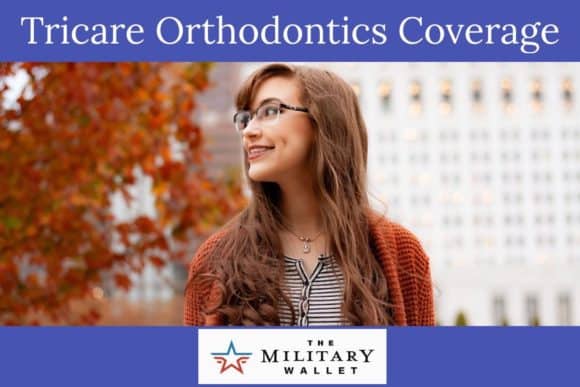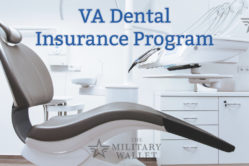Table of Contents
You (or your dependent) need orthodontic treatment, and after doing your research, you realize the average person pays anywhere between $3,000-$6,000 for orthodontic treatment.
What does Tricare orthodontic coverage look like? Does it exist?
Instead of having to spend hours making phone calls and searching for information regarding Tricare’s orthodontic coverage, we’ve got you covered.
This guide will walk you through the most important things you need to know about Tricare’s orthodontic coverage, options you have, and other resources available to you and your family.
Does Tricare Pay for the Cost of Braces and Other Orthodontic Coverage?
Under Tricare, orthodontics is only covered if it is related to correcting a severe congenital abnormality. No matter if you’re an active duty member, a reservist, or a dependant, the rules don’t change for orthodontic coverage.
As far as coverage for braces, for example, Tricare offers a dental plan that may cover your orthodontic treatment.
Tricare Dental: Orthodontics Coverage
Although Tricare does not cover dental expenses for dependents, there are options for dependents through the TRICARE Dental Program, administered through United Concordia.
Tricare Dental is not a free program, but it’s available at very reasonable costs.
Premiums for Tricare’s Dental program run anywhere from $12 a month to $103 a month depending on your:
- Military status—active duty members fall under Tricare’s active duty dental care, while retirees may be eligible for a FEDVIP dental plan.
- Plan—single, family plans, or sponsor and family plans (the latter is for Select Reserve, Mobilize IRR, and Non-mobilized IRR).
If you or an enrolled family member are eligible for orthodontic care under your TDP, those premiums may be worth it.. For more information on premium costs for Tricare’s Dental plan, click here.
Tricare Dental Orthodontic Coverage: Who’s Eligible?
Who’s eligible for orthodontic coverage?
Eligibility applies to:
- Children up to the age of 21—unless enrolled in college full time, when the age limit jumps to 23.
- Spouses up to the age of 23.
- National Guardsmen and Reservists up to the age of 23—per the TDP handbook, be sure to check with your command before orthodontic treatment to confirm that it is allowed.
Generally, retirees and active-duty members are not eligible for United Concordia’s Tricare orthodontic coverage.
What Does Tricare Dental Coverage Look Like for Orthodontic Treatment?
If you are eligible for orthodontic coverage, what kind of payments can you expect?
Tricare dental plan covers 50% of your actual costs, up to a lifetime total of $1750.00
What’s that mean?
Simply put, through Tricare’s dental plan, United Concordia will pay 50% of allowable orthodontic care charges. You are responsible for the other half of the payment. Once you reach your lifetime maximum, you are responsible for the full cost of your orthodontic care.
An important note regarding in-network and out of network providers:
If you choose to use a non-network provider for your orthodontic treatment, you will be charged the standard 50% of the actual costs plus the difference between your TDP allowance and the billed charges.
Do the same eligibility rules apply to OCONUS and CONUS patients?
Previously, braces were free for dependents stationed outside of the United States, but that is no longer the case. Today, CONUS and OCONUS patients fall under the same coverages; the only difference is how care is accessed.
For more information about TDP’s orthodontic OCONUS coverage and any other information regarding orthodontic coverages, check out the TDP’s handbook from Tricare’s publications page.
What if I Don’t Qualify for Tricare’s Orthodontic Coverage?
If you don’t qualify for orthodontic coverage due to…
- Age
- Military status
- Etc.
… but still would like (or need) orthodontic care, don’t fret, there are ways to lower your treatment costs.
Consider some of the following options:
- Shop around. Don’t necessarily go with your first option. Ensure you know you’re getting the best treatment and the best price by talking with multiple orthodontists in your area.
- Look into private dental insurance that covers your specific needs.
- Ask if the provider offers any discounts. These may include:
- Military discounts
- Multi-family member discounts
- Referral discounts
- Discounts for paying in full upfront
- Consider no-interest financing. Many orthodontic offices offer no-interest or low-interest financing to their patients.
- Use a health savings account. Did you know you can use your HSA account to pay for braces and some other orthodontic expenses? This is an excellent option if you aren’t eligible for orthodontic coverages and may be combined with other savings options—like a military discount.
Are you interested in enrolling in dental or orthodontic care, or learning more about coverages? This military insurance guide is full of helpful information regarding dental insurance and more.




About the comments on this site:
These responses are not provided or commissioned by the bank advertiser. Responses have not been reviewed, approved or otherwise endorsed by the bank advertiser. It is not the bank advertiser’s responsibility to ensure all posts and/or questions are answered.